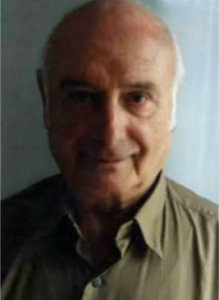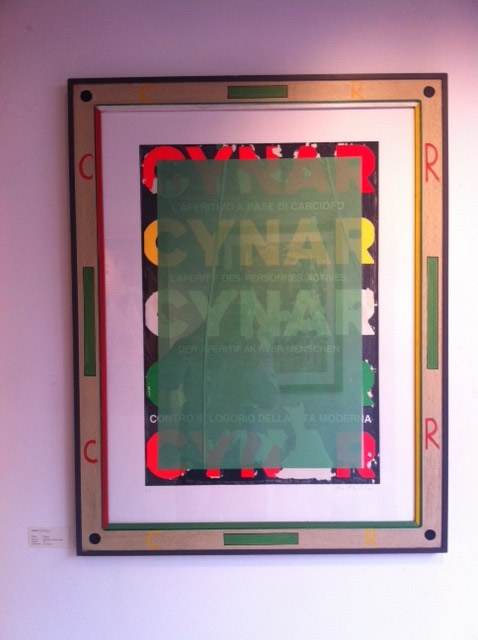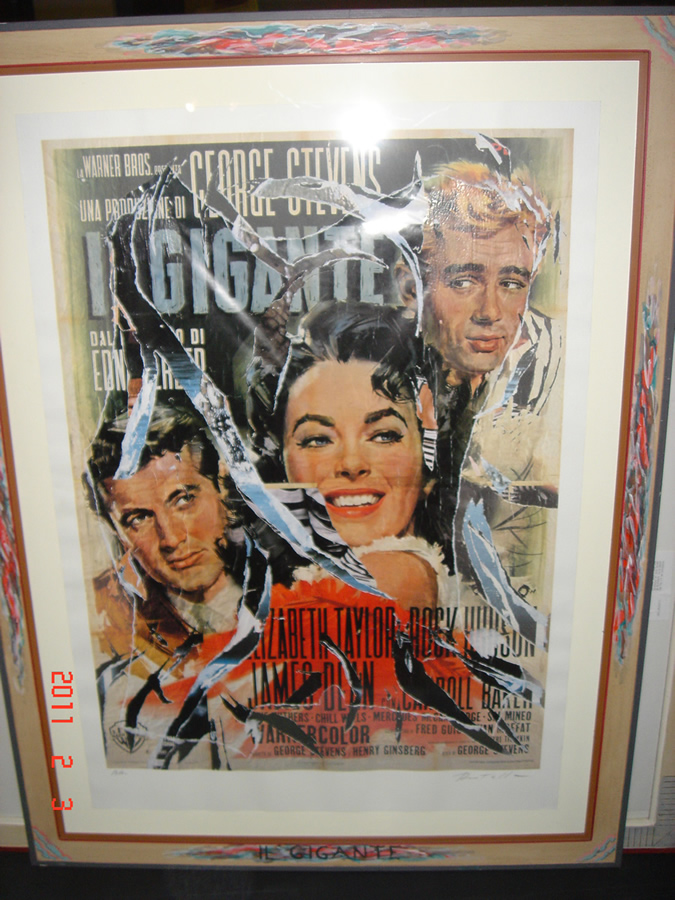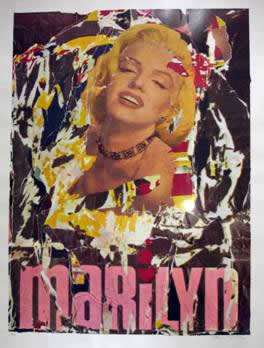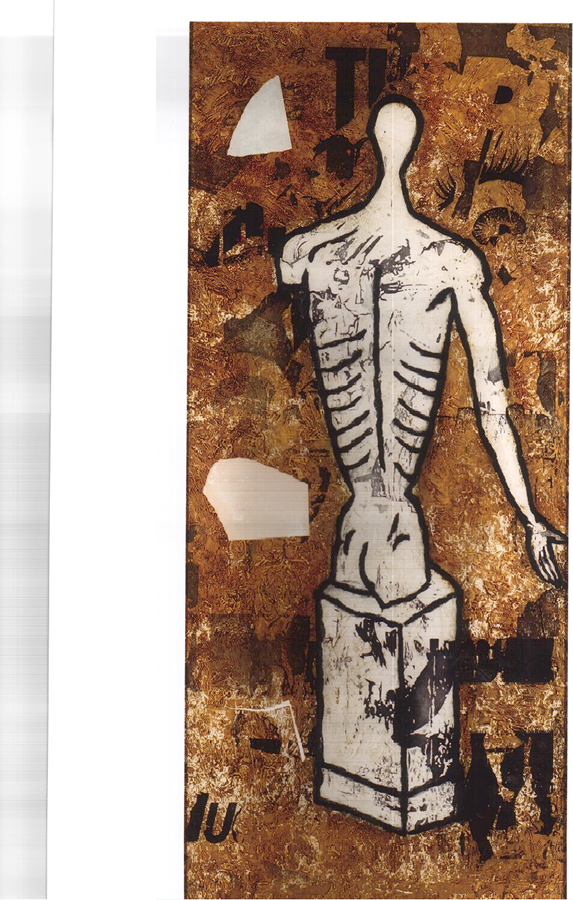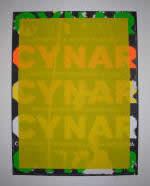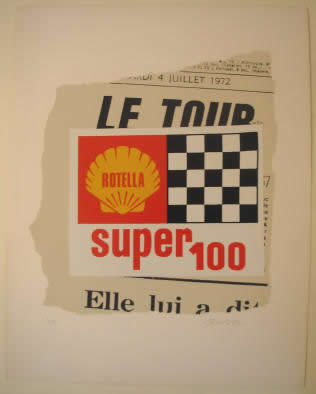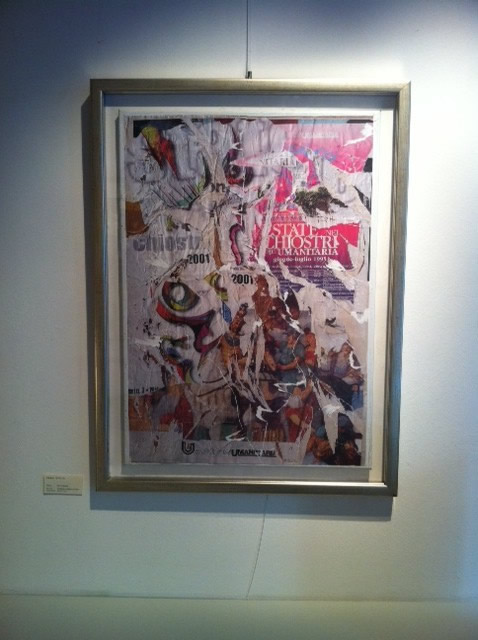Mimmo Rotella
Leggi tutto - Read more
Artista dalla multiforme personalità e dalle concezioni visive intense e sempre allineate ad un gusto avanguardistico (poco compiaciuto della ricerca commerciale, malgrado i soggetti rappresentati), Mimmo Rotella nasce a Catanzaro il 7 ottobre 1918 e, conseguita la maturità artistica presso l’Accademia di Belle Arti di Napoli, si stabilisce a Roma nel 1945.
La prima fase della sua attività è caratterizzata dalla sperimentazione di stili pittorici diversi che lo porterà a rivoluzionare i linguaggi artistici del dopoguerra. Nel 1951 allestisce la prima mostra personale alla Galleria Chiurazzi di Roma, che ottiene ampia risonanza.
Il suo nome comincia dunque a suscitare notevole interesse tanto che nello stesso anno gli viene assegnata una borsa di studio dalla Fulbright Foundation.
Può così permettersi di frequentare la prestigiosa Università di Kansas City, un traguardo lontano per un ragazzo cresciuto nel meridione italiano più profondo.
Rotella ricambia l’istituzione con la realizzazione di un pannello murale nella Facoltà di Fisica e con la prima registrazione dei poemi fonetici da lui definiti “epistaltici”.
Nel 1952 è invitato dalla Harvard University per una performance di poesia fonetica a Boston e dalla Library of Congress di Washington per la registrazione di alcuni poemi fonetici. Tornato in Italia, dopo una fase di riflessione sui mezzi della pittura e sulla necessità di utilizzare nuovi strumenti, inventa la tecnica del décollage, caratterizzata dallo strappo di manifesti pubblicitari affissi nelle strade i cui frammenti, siano essi il recto o il verso, sono incollati sulla tela.
Esempi memorabili di questa fase sono “Un poco in su” e “Collage”, entrambi del 1954.
Dal 1958 abbandona gradualmente le composizioni puramente astratte per realizzare décollage con immagini chiaramente leggibili. Questa tendenza culmina nella serie “Cinecittà”, realizzata nel 1962 (che comprende “Eroi in galera” e “Tre minuti di tempo”) e in quella dedicata alle stelle del cinema e a personaggi famosi (“Assalto della notte”, 1962; “Marilyn calda”, 1963 e così via).
Sono degli anni ’60 e seguenti i lavori dedicati alle affiches del cinema mondiale con i volti dei grandi miti di Hollywood.
Nel 1961 aderisce, su invito del critico Pierre Restany, al gruppo dei Nouveaux Réalistes, nel cui ambito già Raymond Hains, Jacques Mahé de la Villeglé, François Dufrêne utilizzavano i manifesti pubblicitari con procedimenti analoghi a suoi. Trasferitosi a Parigi nel 1964 lavora ancora sulla definizione di una nuova tecnica, la Mec Art, con cui realizza opere servendosi di procedimenti meccanici su tele emulsionate. I primi lavori di questo genere sono esposti alla Galleria J di Parigi (1965).
Continua la sperimentazione con la serie degli Artypo, prove di stampa tipografiche scelte e incollate liberamente sulla tela. Nel 1972 pubblica per la Casa Editrice Sugar il volume autobiografico “Autorotella” esibendosi, in occasione della presentazione del libro al Circolo Culturale Formentini di Milano, in una performance con i suoi poemi fonetici.
E’ del 1975 la serie “Plastiforme” che espone alla Galleria Plura di Milano; nello stesso anno pubblica anche il primo disco LP italiano di Poemi Fonetici 1949/75 con presentazione di Alfredo Todisco.
Gli anni ’70 sono segnati da frequenti viaggi in USA, India, Nepal, per stabilirsi definitivamente a Milano nel 1980.
Appartengono agli inizi degli anni ’80 le “Coperture”, manifesti pubblicitari ricoperti da fogli che occultano l’immagine sottostante, presentati allo Studio Marconi di Milano ed alla Galleria Denis René di Parigi (1981).
Torna alla pittura alla metà del decennio con il ciclo “Cinecittà 2” in cui riprende il tema del cinema affrontato in tele di grandi dimensioni e con la serie “Sovrapitture” su décollage e su lamiera: questi interventi pittorici su manifesti lacerati e incollati su pannelli metallici caratterizzano la stagione più recente dell’artista.
Oltre che alle principali mostre dei Nouveaux Réalistes ed a più di cento esposizioni personali in Italia e all’estero, l’artista ha partecipato ad importanti rassegne nazionali ed internazionali fra cui:
– The Art of Assemblage (New York, Museum of Modern Art, 1961)
– Oltre l’Informale (IV Biennale Internazionale d’Arte di San Marino, 1963)
– Vitalità del negativo nell’arte italiana 1960/70 (Roma, Palazzo delle Esposizioni, 1970)
– Linee della ricerca artistica in Italia 1960/1980 (Roma, Palazzo delle Esposizioni, 1981)
– Arte Italiana contemporanea (Londra, Hayward Gallery, 1982)
– Arte Italiana del XX secolo (Londra, Royal Academy of Arts, 1989)
– The Italian Metamorphosis 1943-1968 (New York, Solomon R. Guggenheim Museum, 1994)
– Art and film since 1945. Hall of Mirrors (Los Angeles, Museum of Contemporary Art, 1996)
Mimmo Rotella è morto a Milano il 9 gennaio 2006.
Mimmo Rotella was born in Catanzaro on the 7th of October 1918, the son of a milliner. Following high school he moved to Naples where he began art studies (in 1941 he went to Rome after having obtained a post at the Ministry of Postal and Telecommunication Services). He did not stay long in the capital, however: on being called up he joined the course in the Officer-training School in Nocera. From here he was sent to the School for Non-commissioned Officers in Caserta (Campania). In 1944 he left the armed forces and then obtained his diploma at the Naples Art Academy. From 1944 until 1945 he taught draftsmanship at his city’s Institute for Surveyors.
In 1945 he moved to Rome: following his figurative beginnings and first experimentations he elaborated a manner of pictorial expression of neo-geometrical matrix. His participation in exhibitions began in 1947 at the Mostra Sindacale di Arti Figurative. He also took part in all the annual exhibitions of the Art Club up until 1951, both in Rome and Turin. As an alternative expressive method 1949 saw him invent phonetic poetry which the artist called ‘epistaltic’ (a neologism lacking sense): this was a collection of words (also invented ones), whistles, sounds, numbers and onomatopoeic reiterate. In the same year he wrote its Manifesto which in 1955 was published by Leonardo Sinisgalli in “Civiltà delle Macchine”. His first one-man exhibition, with abstract-geometrical works, was held in 1951 at the Galleria Chiurazzi in Rome (an exhibition which enjoyed little favour on the part of criticism).
Also in 1951 he had his first contact with French artists, exhibiting in Paris at the “Salon des Realistes Nouvelles”. For the period bridging 1951-1952 he obtained a scholarship on the part of the Fullbright Foundation, thanks to which he was able to sojourn in the United States at the University of Kansas City with the appointment as Artist in Residence. Here he created a large mural composition and recorded phonetic poems with the accompaniment of percussion instruments. At Harvard University in Boston he held a performance of phonetic poetry and recorded other pieces for the Library of Congress in Washington.
In 1952 he also held a second one-man exhibition at the Rockhill Nelson Gallery in Kansas City. His sojourn in the United States offered the possibility of getting to know the works of the protagonists of the new art currents: Rauschenberg, Oldenburg, Twombly, Pollock and Kline.
Following his return to Rome in 1953 he experienced a drawn-out crisis during which he interrupted his pictorial production. Convinced that everything in art had already been done he improvised what he himself has defined as “Zen illumination”: in short, the discovery of the advertising poster as artistic expression, as the message of the city. This saw the origin of the décollage – initially the collage – by way of glueing pieces of posters ripped off on the street onto canvas. Here Rotella adopted the collage as used by the cubists, ‘contaminating’ it with the dadaist and desecrating matrix of the objet trouvé. In Rome he showed the ‘torn poster’ for the first time in an exhibition entitled “Esposizione d’arte attuale” (1955).
He carried out the so-called “double décollage”: that is, the poster firstly removed from the wall and then torn up in the studio. In this period he also made use of the retros d’affiche, using the verso of the posters with the result obtained of non-figurative and monochrome works.
He began to receive acknowledgements in 1956 with the Graziano Award, followed in 1957 by the Battistoni e della Pubblica Istruzione Award. With the Cinecittà series of 1958 he chose both the figures and faces of film posters, orientating his production towards works of a more figurative type.
Already recognized by criticism at the close of the 1950’s as being an exponent of the “Young Roman Painting, Rotella was labelled as the ‘poster ripper’ or the ‘painter of glued paper’. At night, armed with a penknife, he not only ripped off posters but also pieces of the metal sheeting and zinc of the mounting frames of the billboard zones of the Rome City Council. In 1958 he was visited in Rome by the French critic Pierre Restany, a meeting which was to lead to a long friendship. In the same year he was included in the Roman exhibition entitled “Nuove tendenze dell’arte italiana”, organized by Lionello Venturi and held in the seat of the Rome-New York Art Foundation. In 1959 one of his works was reproduced in the review “Azimuth”, founded in Milan by Enrico Castellani and Piero Manzoni.
The curiosity on the part of the public for the artist’s extravagances, for a person who decidedly led a bohémien life, was crystallized in 1960 by way of a short film directed by Enzo Nasso dedicated to the Pittori arrabbiati [Angry Painters]. Here Rotella directed the ‘soundtrack’.
In 1960 he ‘joined’ the Nouveau Réalisme group (although he did not sign its manifesto). The theoretician of this movement was Pierre Restany and included – amongst others – names like Klein, Tinguely, César, Spoerri, Arman and Christo. The group also included the French artists Hains, Villeglé and Dufrêne who in fact also worked on the collage, albeit in an autonomous way. By working in the most total isolation Rotella had anticipated the path of his French colleagues who were only exhibited for the first time in 1957 at the Galerie Colette Allendy in Paris.
Together with his décollages Rotella also created assemblages of objects bought from junk dealers: bottle caps and stoppers, pieces of rope, twine etc.
American Pop Art and Abstract Expressionism, together with the Informal and the spatial and matteric research works carried out in Italy at the time by Fontana and Burri, played an important role in directing Rotella’s pictorial orientation. In 1960 he met De Kooning and Rothko in Rome.
In 1961 he took part in the historical Parisian exhibition entitled “A 40° au-dessus de Dada”, supervised by Pierre Restany. In 1962 he talked about his own artistic operations at the School of Visual Arts in New York. In 1964 he was invited to take part in the Venice Biennial.
While the press increasingly more talked about the phenomenon of Affichisme Rotella moved to Paris where he began to elaborate a procedure of serial production by way of the projection of images in the negative on emulsified canvas. This operation was to be given the definition of Reportage by the artist or, and more specifically, Mec-Art in 1965 together with the art critic Otto Hanh and the painter Alain Jaquet. The same year saw his Parisian exhibition at the Galerie J.
Using typographical products, between 1967 and 1973 he created his Art-typo works, printing proofs freely chosen and reproduced on canvas. With this procedure he amused himself in insetting and superimposing advertising images: «I inverted my old approach: first I tried to disintegrate, now I try to reintegrate that matter, that reality».

